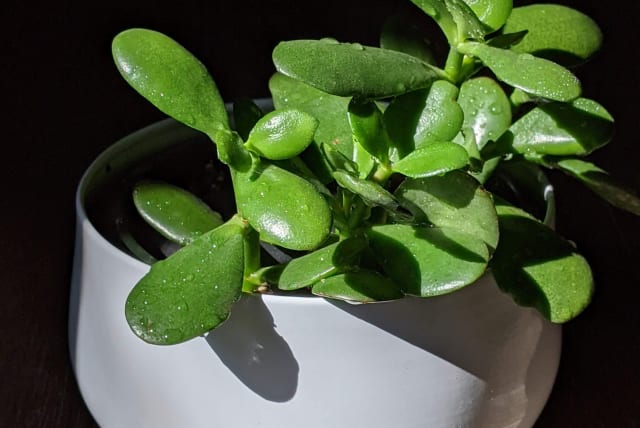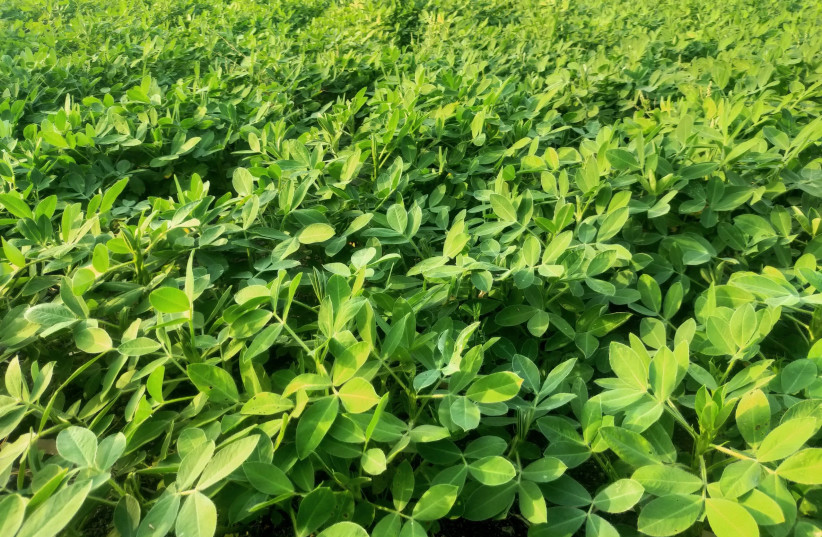Talking to plants could save their lives - here's how

‘Talking’ to plants with light could give them advance warning of impending dangers like insects or extreme weather
England’s King Charles III has been lampooned for his habit of talking to plants he raises at the palace to make them thrive. But maybe there is something to it. Imagine if humans could communicate with plants and warn them in advance of approaching pest attacks or extreme weather.
A team of plant scientists at the Sainsbury Laboratory Cambridge University (SLCU) in the US would like to turn this science fiction into reality using light-based messaging to “talk” to plants.
Early lab experiments with tobacco (Nicotiana benthamiana) have shown that they can activate the plant's natural defense mechanism (immune response) using light as a stimulus (messenger). Light serves as a universal means of daily human communication, for example the signaling at traffic lights, pedestrian crossings, or the open-closed status of a store.
Plant scientist Dr. Alexander Jones and his research team previously engineered a series of biosensors using fluorescent light to visually communicate in real-time what is happening at the cellular level in plants, revealing the dynamics of critical plant hormones. These biosensors can tell us how plants are reacting to environmental stresses – plants “talking” to humans.
Their latest research published in PLOS Biology under the title “Highlighter is an optogenetic actuator for light-mediated, high resolution gene expression control in plants” describes a new tool called Highlighter that uses specific light conditions to activate the expression of a target gene in plants, for example to trigger their defense mechanisms – humans communicating with plants.
Such an idea has long captured the imagination of people. If such a capability were possible, it could revolutionize agriculture and our relationship with plants, the team said.
“If we could warn plants of an impending disease outbreak or pest attack, plants could then activate their natural defense mechanisms to prevent widespread damage,” Jones explained. “We could also inform plants about approaching extreme weather events, such as heatwaves or drought, allowing them to adjust their growth patterns or conserve water. This could lead to more efficient and sustainable farming practices and reduce the need for chemicals.”
Light-controlled gene expression
Bo Larsen, who engineered Highlighter while at SLCU, has taken us a major step closer to this goal of “talking” to plants by engineering a light-controlled gene expression system (optogenetics system) from a prokaryotic system into a eukaryotic system that is tailored for plants.
To understand cellular activity, biologists need to be able to control biomolecular processes at the cellular level. Optogenetics is a scientific technique that uses a light stimulus to activate or deactivate a specific process. “Light stimuli are cheap, reversible, non-toxic and can be delivered with high-resolution,” Jones noted. To do this, scientists engineer light-sensitive proteins (photoreceptors) to control a target process and then deliver these optogenetic ‘actuators’ to the cells they want to control.
Optogenetics has revolutionized many fields including neuroscience where biologists can isolate functions of individual neurons, but it has been difficult to apply to plants – because they already contain lots of photoreceptors and need a wide spectrum of light to grow. Switching from dark to light also activates native plant photoreceptors and a myriad of cellular systems.
Complicating this problem is the fact that many of the best-performing optogenetic actuators use genetic parts from plants, meaning they could cross-talk with native photoreceptors if used in plants.
The team detected that their new system was still able to use green and red light just like the original system. But spectroscopic analysis showed evidence of an independent blue-light sensing. When deployed in plants, Highlighter uses minimally invasive light signals for activation and inactivation and is unaffected by the light-dark cycling in growth chambers.
“Highlighter is an important step forward in the development of optogenetics tools in plants and its high-resolution gene control could be applied to study a large range of fundamental plant biology questions,” Jones concluded. “A growing toolbox for plants, with diverse optical properties, also opens exciting opportunities for crop improvement. For example, in the future we could use one light condition to trigger an immune response, and then a different light condition to precisely time a particular trait, such as flowering or ripening.”
Jerusalem Post Store
`; document.getElementById("linkPremium").innerHTML = cont; var divWithLink = document.getElementById("premium-link"); if (divWithLink !== null && divWithLink !== 'undefined') { divWithLink.style.border = "solid 1px #cb0f3e"; divWithLink.style.textAlign = "center"; divWithLink.style.marginBottom = "15px"; divWithLink.style.marginTop = "15px"; divWithLink.style.width = "100%"; divWithLink.style.backgroundColor = "#122952"; divWithLink.style.color = "#ffffff"; divWithLink.style.lineHeight = "1.5"; } } (function (v, i) { });

